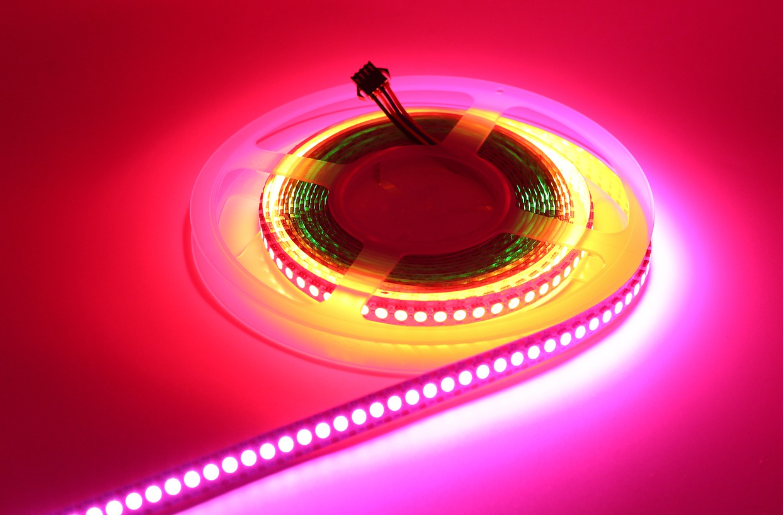Business
Illuminating Success: The Dynamics of the LED Light Business

In recent years, the LED (Light Emitting Diode) lighting industry has witnessed a remarkable surge in demand, transforming the way we illuminate our homes, workplaces, streets, and beyond. This transition isn’t just about a change in technology; it’s a testament to the sustainable, efficient, and versatile nature of LED lighting solutions. As the world becomes increasingly conscious of energy consumption and environmental impact, the LED light business has emerged as a beacon of innovation and opportunity.
The Evolution of LED Lighting
LED technology has come a long way since its inception. Initially confined to small indicator lights, LEDs have now evolved into a mainstream lighting solution, competing fiercely with traditional incandescent and fluorescent lighting. The journey from bulky, inefficient bulbs to sleek, energy-efficient LED fixtures epitomizes the relentless pursuit of advancement within the lighting industry.
One of the primary driving forces behind the widespread adoption of LED lighting is its energy efficiency. LEDs consume significantly less power compared to traditional lighting sources, translating into substantial cost savings for consumers and businesses alike. Moreover, the longevity of LED bulbs—often lasting tens of thousands of hours—further enhances their appeal, reducing maintenance costs and enhancing reliability.
Market Dynamics and Trends
The LED light business operates within a dynamic landscape shaped by various factors, including technological advancements, regulatory policies, and shifting consumer preferences. Understanding these dynamics is crucial for businesses looking to thrive in this competitive environment.
Technological Advancements: Continuous innovation drives the evolution of LED technology, leading to improvements in efficiency, color rendering, and design flexibility. Businesses that stay at the forefront of these advancements are better positioned to capture market share and satisfy customer demands.
Sustainability and Energy Efficiency: With growing environmental concerns, there’s a heightened emphasis on sustainable lighting solutions. LED lights, with their low energy consumption and minimal environmental footprint, align perfectly with this trend. Companies that prioritize sustainability in their product offerings and manufacturing processes gain a competitive edge and appeal to eco-conscious consumers.
Smart Lighting Integration: The integration of LED lighting with smart technology has unlocked a myriad of possibilities, enabling features such as remote control, automation, and customization. As the Internet of Things (IoT) continues to proliferate, smart LED lighting systems are poised to become ubiquitous, offering enhanced convenience, energy savings, and user experience.
Customization and Personalization: Consumers today seek lighting solutions that not only illuminate spaces but also reflect their individuality and preferences. Customizable LED fixtures, capable of adjusting color temperature, brightness, and ambiance, cater to this demand for personalized lighting experiences. Businesses that offer bespoke lighting solutions can carve out a niche in the market and foster customer loyalty.
Challenges and Opportunities
While the LED light business presents significant opportunities for growth and innovation, it also faces its share of challenges.
Pricing Pressures: Intense competition in the LED lighting market exerts downward pressure on prices, squeezing profit margins for businesses. To remain competitive, companies must focus on operational efficiency, economies of scale, and value-added services to offset pricing pressures.
Regulatory Landscape: Regulatory standards and energy efficiency requirements influence product design and market access. Staying compliant with evolving regulations while maintaining product quality and performance is essential for businesses operating in the LED lighting industry.
Supply Chain Disruptions: Global supply chain disruptions, whether due to geopolitical tensions, natural disasters, or pandemics, can disrupt production schedules and hinder supply chain efficiency. Diversifying supply sources, implementing robust risk management strategies, and fostering agile supply chain practices help mitigate these risks.
Educating Consumers: Despite the widespread adoption of LED lighting, there remains a segment of consumers unfamiliar with its benefits and features. Educating consumers about the advantages of LED lighting, such as energy savings, longevity, and environmental sustainability, can expand market penetration and drive demand.
Conclusion:
The LED light business represents a dynamic and rapidly evolving industry driven by innovation, sustainability, and technological advancement. As businesses navigate through market challenges and capitalize on emerging opportunities, the future of LED lighting appears brighter than ever. By embracing innovation, sustainability, and consumer-centricity, companies can illuminate not just spaces but also their path to success in this burgeoning industry.
-
Blog1 year ago
MyCSULB: Login to CSULB Student and Employee Portal – MyCSULB 2023
-
Android App3 years ago
Cqatest App What is It
-
Android1 year ago
What Is content://com.android.browser.home/ All About in 2023? Set Up content com android browser home
-
Software2 years ago
A Guide For Better Cybersecurity & Data Protection For Your Devices
-
Latest News2 years ago
Soap2day Similar Sites And Alternatives To Watch Free Movies
-
Android2 years ago
What is OMACP And How To Remove It? Easy Guide OMACP 2022
-
Android3 years ago
What is org.codeaurora.snapcam?
-
Business2 years ago
Know Your Business (KYB) Process – Critical Component For Partnerships





















